Imagery is pivotal to the UK monarchy’s power, popularity and prevalence, not just to their British subjects but to citizens across the globe. State-sanctioned images are likely familiar to you: grand, opulent, communicating the institution’s longevity through stately poses and firm brushwork. The question we’re asking in this article does not concern the professional paintings commissioned by the royal family but instead considers how broader artists have responded to the monarchy in recent years.
Spectacle
The Procession Passing the Queen Victoria Memorial, Coronation depicts a formative moment in the reign of Elizabeth II and yet the queen herself is merely a speck of red paint contained in the carriage. Instead, Laurence Stephen Lowry’s 1953 scene portrays the coronation spectacle with crowds, flags, and the sense of togetherness likely to be replicated on Saturday 6 May, 2023. Buckingham Palace is here pictured as the locus of monarchy, accompanied by the accoutrements of royalty: gold carriage, London guards, and an equine procession. Against the monochromatic crowd who are gathered in similar shades of grey, brown, beige and black, the shining gold carriage strikes a remarkable difference.
Contemplating the spectacle of Lowry’s scene, we are confronted with two ideas about the new monarch. On the one hand, the mass of the crowd indicates overwhelming patriotism and support for Elizabeth II. Conversely, examining the crowd as individuals rather than a unified body, we see certain ambivalent behaviours which indicate a spectrum of opinion instead. The figures in the foreground have chosen to remove their hat out of respect, whilst others visible in the crowd have not. Some eagerly outstretch an arm to wave, whilst others turn in conversation. The overwhelming effect of Lowry’s scene is to underscore the remarkable difference between the thousands of grey, repeated figures, themselves just dots on a canvas, in comparison to the queen in bright red: a unique and revered individual.
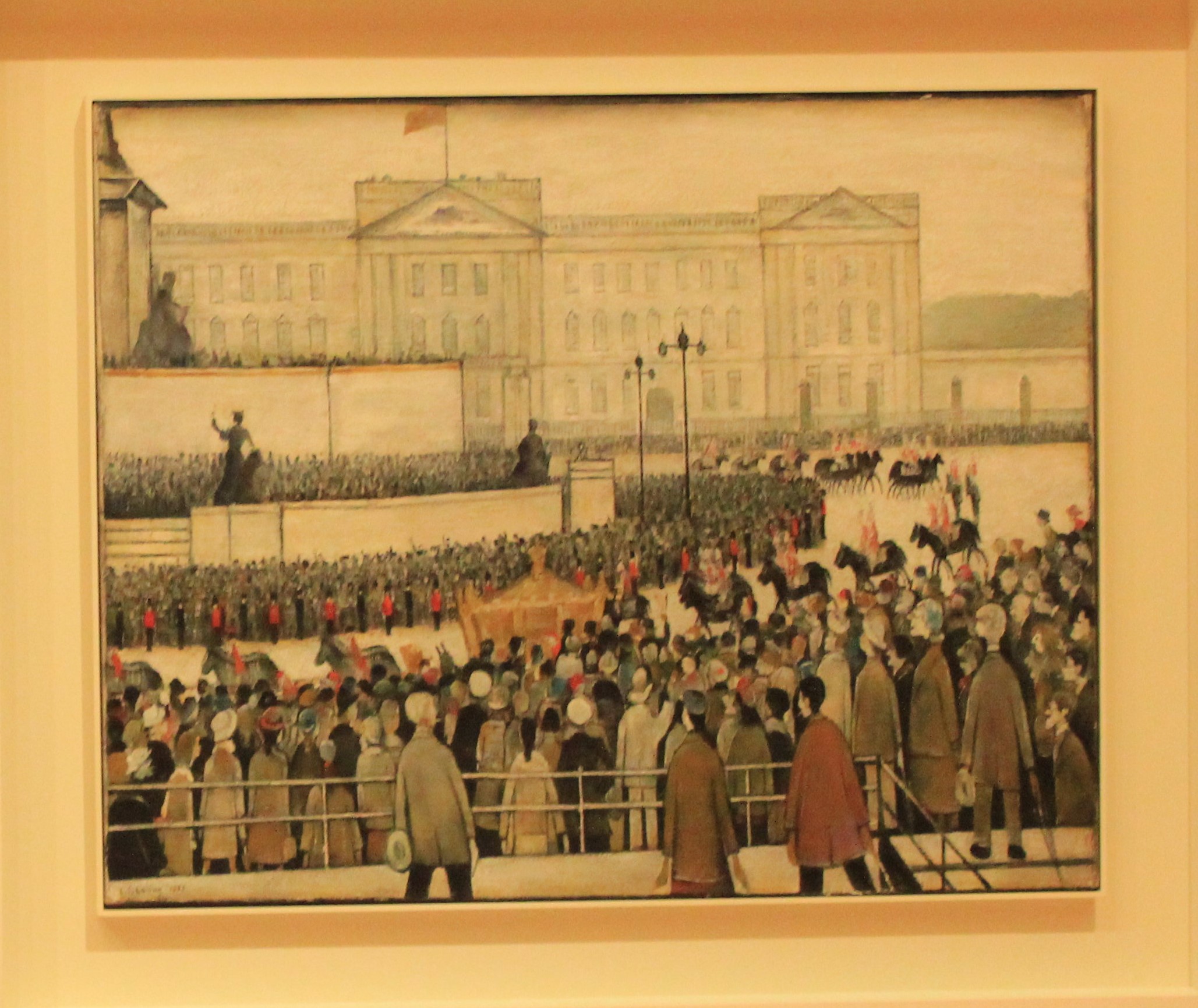 Image courtesy of The Lowry: https://www.flickr.com/photos/thelowry/11305413945/in/photostream/
Image courtesy of The Lowry: https://www.flickr.com/photos/thelowry/11305413945/in/photostream/
Hope
A reason for the reverence received by the royal family from the public is indicated in Margaret Doovaston’s George VI and Queen Elizabeth Inspecting Air Raid Damage at Perivale, 27 September 1940. In this somewhat idealised scene, the royal figures demonstrate their ability to galvanise hope in crisis. Against the fractured surroundings, George IV and Elizabeth II are composed, calm and united. Two children in the background, keen to glimpse royalty, dart forwards. Likely, this is the same reaction desired by the more reserved and uniformed military staff behind the young family. Dovaston reveals the hope and optimism signalled by national figureheads during a period of emergency.
Protest
Lowry and Dovaston portray the patriotism, hope and identity often communicated through images of the monarchy. Painting is a traditional medium typically reserved for grand history and genre scenes appropriate to these themes. The shift in medium from painting to photocollage, screenprints and graffiti is therefore more striking as we move to Jamie Ried’s God Save the Queen album cover for the Sex Pistols.
The portrait is based on a commissioned photograph of the queen by Cecil Beaton and was designed in the year of the Silver Jubilee in 1977. Through the collaged lettering, Ried’s homage to the early 20th century Dada movement recalls its explosive, anti-art and anti-establishment sentiments. The band’s ironic song title covers the queen’s eyes, denying sight and by extension calling out the blindness and irrelevancy of the royal family as an institution. Her mouth is also obscured, preventing speech and rendering the royal family silent. Crucially, the iconoclastic album cover takes an image of the queen in a typical head-and-shoulders format as its point of departure. This trope, as we will see, is seemingly recurrent in protest images and highlights the reproducibility of this unreplicable figure.
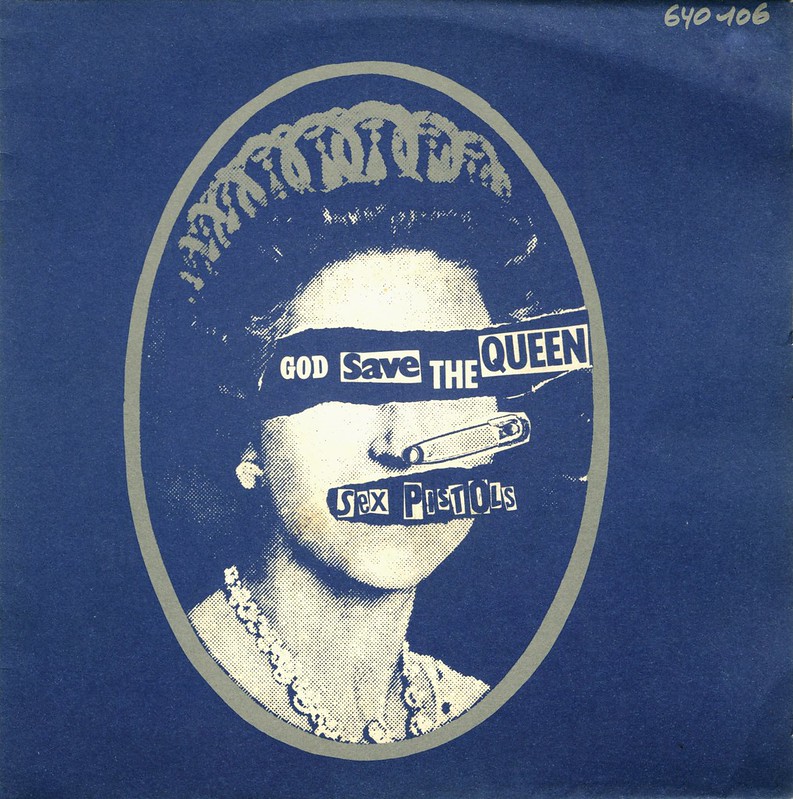 Image courtesy of Gilles Péris y Saborit: https://www.flickr.com/photos/gperis/5145829316
Image courtesy of Gilles Péris y Saborit: https://www.flickr.com/photos/gperis/5145829316
Repetition
Andy Worhol and Ernesto Romano played with the reproduced image of the queen often found on stamps and coins, but to different ends. Worhol, working in the 1980s, produced an image of the queen in line with his distinctive screen print techniques formed in the Pop Art era. Vibrant and multicoloured, this image is part of a series Reigning Queens which also features Queen Beatrix of the Netherlands, Queen Margrethe II of Denmark and Queen Ntombi Twala of Swaziland. Worhol was an artist key in playing with reproducibility and his technique is recalled in Ernesto Romano’s stamp series, Royal Book. Here Romano has used an X-ray technique to humanise the queen and call attention to equality. He explains, “the X-ray is the perfect example for me of how we all look the same underneath and the first class stamp with an X-rayed Queen profile reiterates this idea.”
Banksy’s images of the queen feature similar pop colours found in Worhol and Romano, but his graffiti images are infamous examples of anti-monarchy art. A less well-known Banksy piece regarding the monarchy, however, is his Di-Faced Tenners. Banksy released 100,000 of these fake £10 notes which replaced the monarch’s figurehead with Lady Diana. The artist first threw suitcases full of the notes at crowds at Reading Festival, Notting Hill Carnival and Liverpool Street tube station in 2004. Banksy also changed the phrase ‘Bank of England’ to read ‘Banksy of England’ and underneath is printed ‘I promise to pay the bearer on demand the ultimate price’ in reference to the cause of Lady Diana’s death.
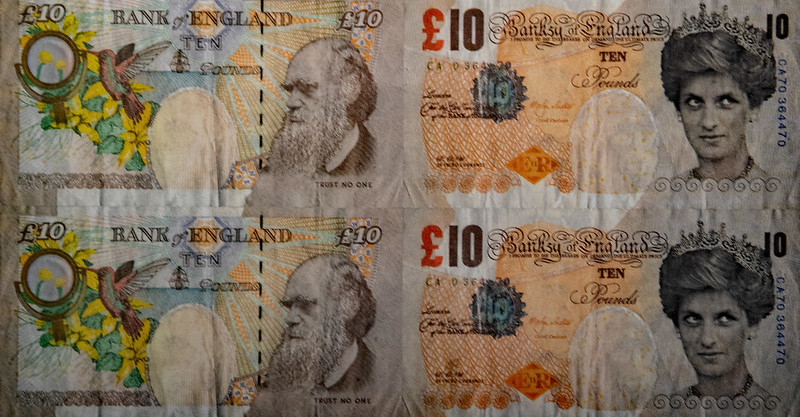 Image courtesy of David: https://www.flickr.com/photos/bootbearwdc/52186417107
Image courtesy of David: https://www.flickr.com/photos/bootbearwdc/52186417107
Response
Whether communicated through spectacle, patriotism, or experimenting with the familiar images of royalty disseminated throughout public life, artists have provoked public attention by playing with the image of the monarchy. Some artists also used performance art to admonish the inequalities wrought by the monarchical system and others draw attention to the personality of the late queen.
The question is now, how will you respond? Note the new images of state circulating throughout the Coronation of Charles III and embrace art as a vehicle of expression.

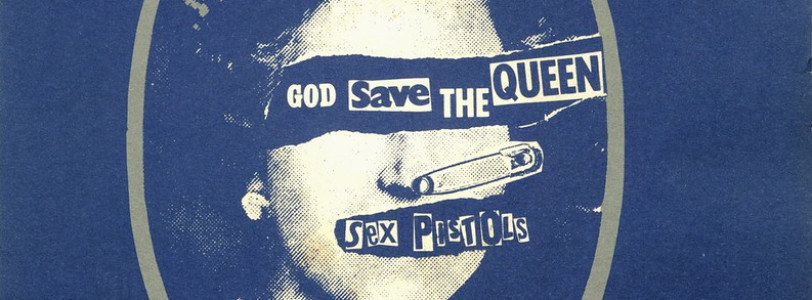

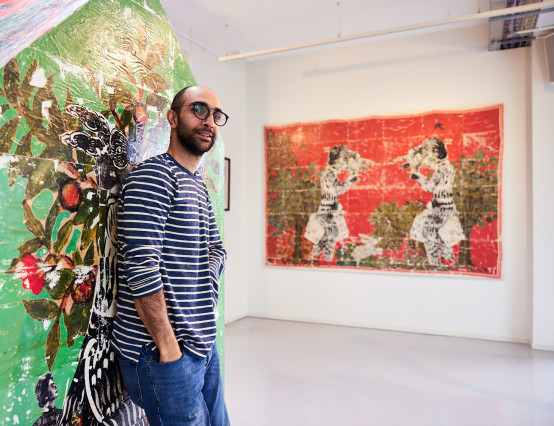
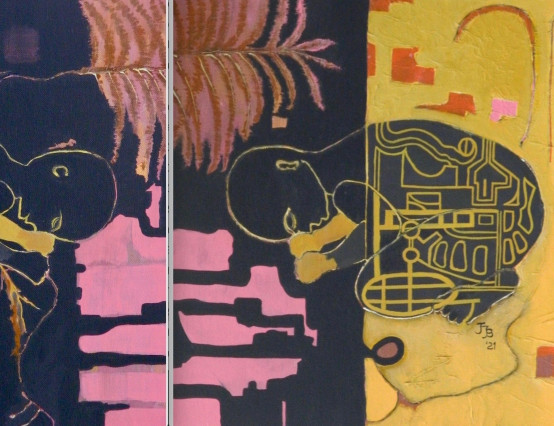


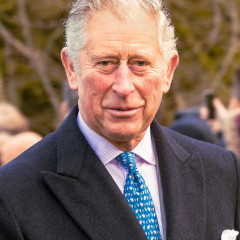
0 Comments